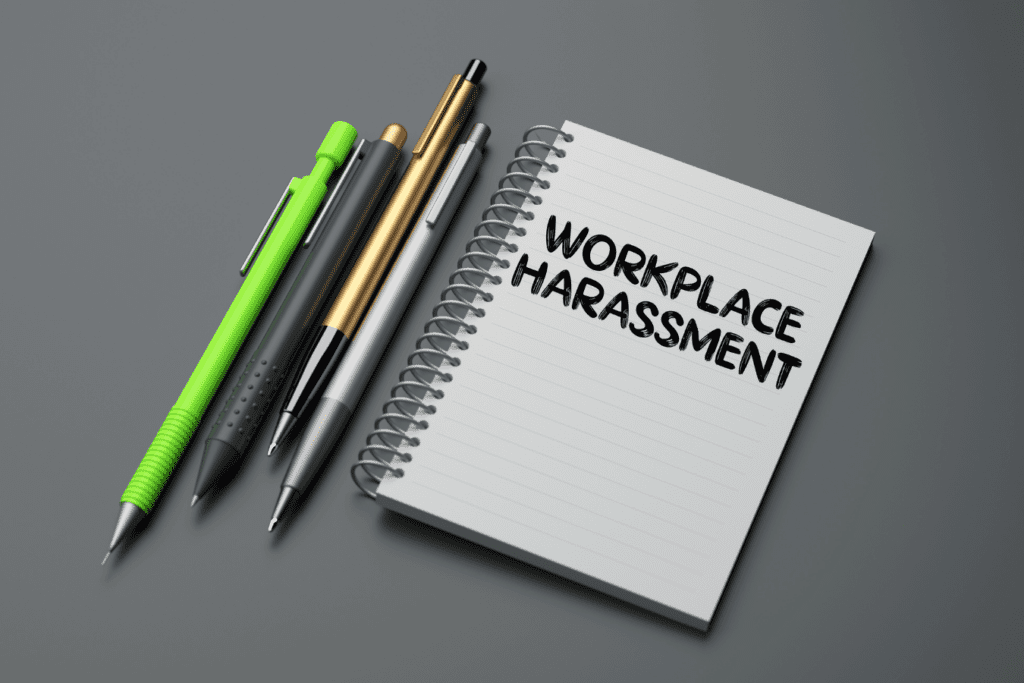Unfortunately, workplace bullying is something that impacts employees across all industries and all levels of employment. Of course, this is challenging for both the employees dealing with it and the manager trying to handle the situation effectively. Addressing this situation promptly is crucial to limit the harm, even though it can be tricky.
What is Workplace Bullying?
Persistent mistreatment that occurs in the workplace defines workplace bullying. It can include behaviours such as verbal criticism, personal attacks, humiliation, belittling, and exclusion. Senior employees can also bully junior employees at work. Regardless of their role, any employee can be a victim of workplace bullying.

Examples of typical workplace bullying include:
- Targeted jokes
- Actively/purposely misleading co-workers on work duties, deadlines, or directions.
- Threats, humiliation, or verbal abuse
- Denial of requests for support/time off/other requests without a valid reason
- Harsh/unjust criticism
How significant is the problem of Workplace Bullying?
Workplace bullying is a big problem. In the United States, a whole organization studies and reports on this issue.

Every 3-4 years, the Workplace Bullying Institute carries out a workplace bullying survey. They completed the most recent survey in 2021. Here are some of the key stats/facts:
- Workplace bullying affected over 79 million U.S. workers in the year previous to the survey. This consists of 48.6 million employees who directly experience bullying and 30.6 million employees who witness it.
- Estimates indicate that workplace bullying is currently being experienced by 13% of the U.S. working population.
- Remote workers are also susceptible – with approximately 43% of remoter workers experiencing it.
- Workplace bullies are 67% male and 33% female. Interestingly, victims of male bullies are 58% male and 42% female. However, the victims of female bullies are 65% female and 35% male.
- The survey also found that employers often justify or deny allegations of bullying happening in their workplace.
90% of adult Americans in the 2021 survey support a law against abusive behaviour in the workplace. This is undoubtedly one to keep an eye on in the future.
Prevalence of Workplace Bullying in Healthcare
Workplace bullying is a pervasive issue in the healthcare industry, affecting workers at all levels and specialties. A 2019 review found that 26.3% of healthcare workers face bullying.
Bullying is connected to mental health issues, including burnout and depression. It can also lead to physical health problems, such as insomnia and headaches. Bullying in healthcare contributes to absenteeism and staffing shortages, exacerbating the ongoing healthcare worker crisis.
The Medscape Physician Workplace Culture Report 2024 highlights the deteriorating workplace culture, with 38% of respondents observing a decline, and 70% perceiving a lack of commitment from employers to improve it.
Additionally, 68% of healthcare workers surveyed by Dr. Farah Khan admitted to being bullied, with the behavior occurring at various stages of their careers, including medical school, residency, and as attending physicians. The mistreatment manifests in forms such as belittlement, exclusion, public humiliation, and even sexual harassment.
Contributing to the issue is the hierarchical structure of the medical field, which often reinforces toxic workplace dynamics. Physicians, such as OB/GYN Dr. Kellie Lease Stecher, report facing retaliation when standing up against inappropriate behavior.
Dr. Stecher shared: “I got to a point where I felt like I couldn’t say anything at any meetings without somehow being targeted after the meeting.”
Medscape: A Hard Look at Toxic Workplace Culture in Medicine
Workplace bullying not only impacts healthcare professionals’ well-being but also compromises patient care, leading to higher error rates and diminished staff retention. Experts emphasize the need for institutional solutions, such as zero-tolerance policies, anonymous reporting systems, and leadership training to foster a culture of respect and support. Addressing workplace bullying is critical for improving employee retention, mental health, and ultimately, patient care.
The Effects of Workplace Bullying
It goes without saying that workplace bullying has severe effects on the victim themselves. However, it also has detrimental effects on employers and the workplace culture as a whole. Obviously, persistent and frequent bullying creates a hostile/toxic work environment, which brings many other issues. It also leads to increased absenteeism, reduced productivity, high employee turnover, and huge issues with employee engagement.
Not only that, but specific instances of workplace bullying lead to costly legal proceedings that often end in worker compensation. These legal battles drain finances, resources, and, ultimately, morale across the board. It goes without saying that most employers should be actively working to avoid any workplace conflict at all costs.
How can Employers Effectively Manage Workplace Bullying?
We often advise victims to either confront their bullies or ignore them. However, it is important to note that employers are also responsible for handling bullying situations. Let’s look at what they can do to manage bullying and create a positive employee culture in their workplace effectively.
Acknowledge the Issue
One of the first and most important steps to effectively manage workplace bullying is simply addressing and acknowledging the issue itself. Unfortunately, too many managers are quick to dismiss the idea that it might be happening under their noses. Employers who take no action are at risk of facing lawsuits and paying damages. According to the policy on harassment in the workplace from the U.S. Equal Employment Opportunity Commission (EEOC):
The employer will be liable for harassment by non-supervisory employees or non-employees over whom it has control (e.g., independent contractors or customers on the premises), if it knew, or should have known about the harassment and failed to take prompt and appropriate corrective action.
U.S. Equal Employment Opportunity Commission (EEOC)
Hold bullies accountable

Some managers think adults should solve their problems, but holding bullies responsible for their actions is essential. One of the easiest and most effective ways of handling this is by developing a clear workplace bullying and accountability policy. This outline should specify what behaviour people consider unacceptable and explain the consequences of those actions. It is also helpful to outline work-relevant impacts to illustrate how detrimental bullying can be.
Once you create your policy, take the time to thoroughly distribute it and educate your workforce on what it covers. Update your policy frequently, and update the workplace with these updates. Unfortunately, new methods of bullying arise all the time. This means that you must update your policies regularly.
Remain Impartial
As an employer, it’s likely that you will build close working relationships with some employees or supervisors. This can make such situations complex. Often, employers fail to believe that someone they are close to might be a bully.
The only way to effectively manage this is by remaining completely impartial. All of your employees, especially the victims, are solely relying on you to do so.
Without impartiality, employees or co-workers might feel unable to report any instances of bullying they experience/witness. It’s already challenging to report these things, but as a manager, being impartial is definitely a big help.
Intervene ASAP
Addressing workplace bullying immediately is crucial for managers. Ignoring it may seem more manageable, but it is important to confront the issue. This doesn’t mean creating a scene or even addressing the actual issue there and then.

Sometimes, it’s useful to stop the incident by reminding everyone to continue working or assigning a task to someone involved. This immediately de-escalates the situation and lets the victim and perpetrator know you are aware and watching. Later, you can privately address the problem and present your version of events for investigation.
Frequently Self Assess
As a manager, it’s easy to lose the run of yourself with leadership styles. Control can be dangerous and often goes to our heads. 65% of workplace bullies are managers or bosses. It’s crucial to regularly reflect on your behaviour to avoid contributing to workplace bullying.
When managers lead in a style consistent with forms of bullying, employees start seeing it as acceptable. This leads to increased co-worker bullying and, ultimately, a toxic workplace.
Inquire with your friends/family about their thoughts on whether your behaviour requires any changes. You can even simply ask your employees if there is anything you should change. Transparency is key here and generally leads to a better employee experience.
Workplace bullying is a significant problem in the United States. Managers must learn effective strategies to address and prevent it in order to safeguard their employees. As a manager, the onus is on you to continually monitor and intervene at any signs of bullying or discrimination. Your employees will ultimately thank you, and your organization will run smoother than ever.




